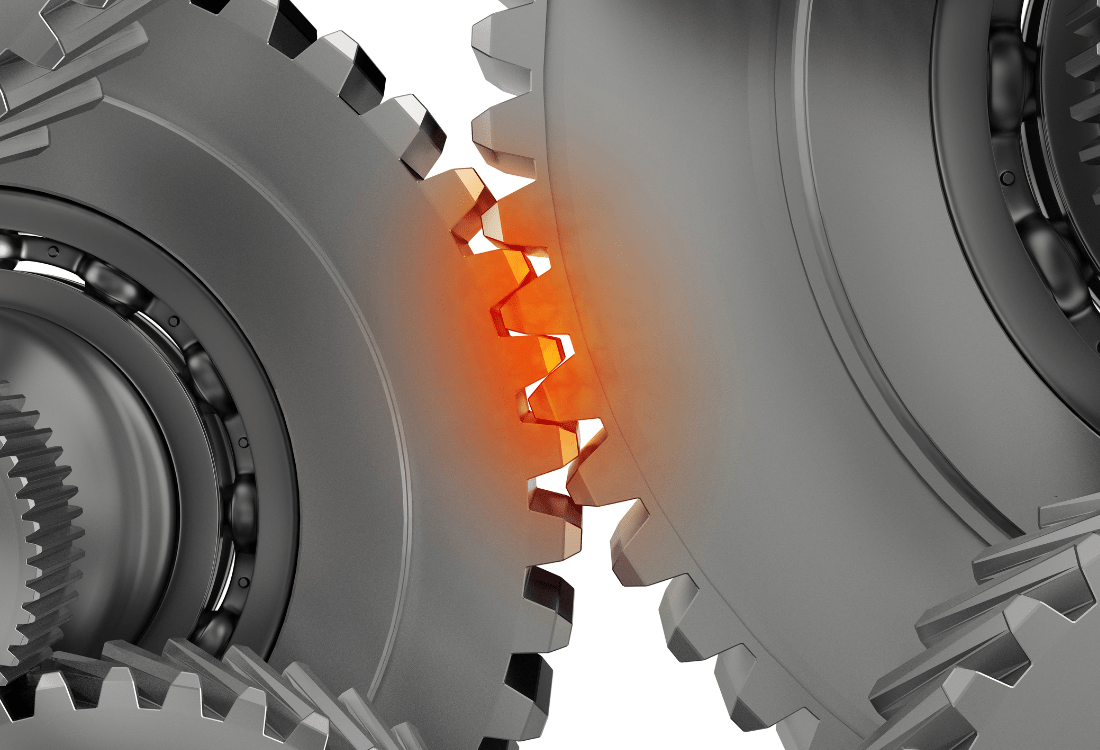
The 4 Most Common Causes Of Mechanical Power Transmission Failure
Understanding what leads to mechanical power transmission failure can help you make informed purchasing decisions and advise your customers on proper installation and maintenance procedures. This overview explains four of the most common causes of failure in mechanical power transmission systems to keep in mind.
1. Misaligned Shaft Couplings
Misalignment between connected shafts is one of the most frequent causes of premature wear and tear or even sudden mechanical failure. Several factors can throw shafts out of alignment, including:
-
Improper Installation: If the shafts are not correctly lined up during equipment assembly, components like bearings, seals, and couplings take on excess load. Result: This accelerates wear.
-
Thermal Expansion: As equipment heats up during operation, the bulk temperature of various components rises at different rates, shifting shafts out of position. Result: Couplings may no longer be concentric.
-
Foundation Settling: Over time, the setting of the foundation and anchoring points can distort the alignment of shafts and couplings. Result: Vibration tends to increase as wear progresses.
Without realignment, misaligned shafts place extraordinary stress on bearings, seals, gears, and other power transmission components, leading to early fatigue failures. In this case, couplings designed to accommodate a reasonable amount of misalignment are essential, as well as making shaft realignment a standard periodic maintenance task.
2. Worn Or Damaged Bearings
Bearings are central to reliable power transmission, as they support rotating shafts while keeping friction to a minimum. However, bearings operate in tough environments and do wear out over time. If you catch them early, worn bearings can be replaced during routine maintenance. However, one damaged bearing can take out other components leading to catastrophic drive failure.
Watch for these signs of bearing wear or imminent failure:
-
Excess Vibration and Noise: As internal clearances increase, bearings rattle audibly. Unchecked, bearing races will flake and rolling elements will raise vibration.
-
Overheating: Frictional heat and loss of lubricant can accelerate wear and cause critical failure.
-
Shaft Wobble: Too much internal clearance allows the shaft to move radially within the bearing.
The solution is to replace your bearings based on hours in service and the application. Also, make sure to protect them from moisture and contaminants that wear surfaces. Choosing the right bearings sized appropriately for the shaft diameter, loads, and speeds is also critical.
3. Incorrect Or Insufficient Lubrication
Lubrication is vital for smooth power transmission and long component life. Both insufficient lubricant flow and using the wrong type of lubricant can lead to accelerated wear and failure.
Without enough lubrication at bearings, gears, and other sliding surfaces that come into contact with each other, the following occurs:
-
Spikes in metal-to-metal contact and friction
-
Accelerated surface wear
-
Seized components due to localized welding
Using petroleum-based lubricants in systems designed for synthetic lubricants also reduces the life of your components. The wrong lubricant breaks down too quickly leaving components unprotected.
So, consult manufacturer specifications for compatible lubricants for each component and use only clean, filtered lubricant in line with the recommended viscosity. Additionally, follow the manufacturers' guidelines for flow rates and re-lubrication intervals to the letter.
4. Overloading The System
Even the most robust mechanical power transmission components have load limits. Consistently exceeding a component's mechanical design capacity stresses the material leading to surface damage, deformation, cracks, and eventual breakage. Shock loads also result in overload failures.
Watch for the telltale signs of regular overloading:
-
Premature wear and gear tooth failure
-
Overheated components
-
Unusual odours from stressed insulation
-
More intense vibration and noise
Determine the capacity requirements of your application and purchase components sized accordingly.
Keep Mechanical Power Transmission Failures To A Minimum With BTL
Knowing what can go wrong is essential in minimising the risks of a mechanical power transmission failure. To learn more, download a free copy of BTL's Ultimate Guide To Bearings, Mechanical Power Transmissions or get in touch.






